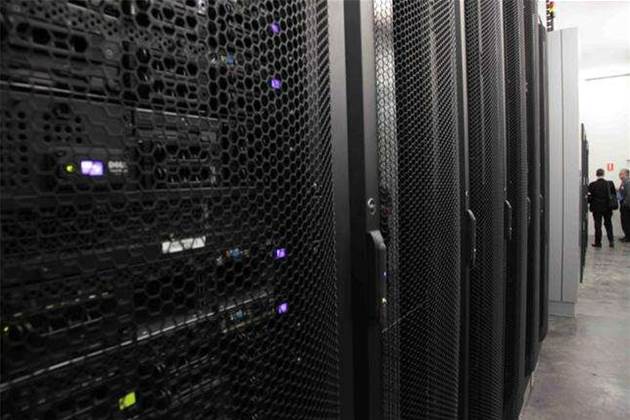Dell has cited a lack of customer demand as the reason behind its shift from container data centre fit-outs to a more flexible, modular approach.

Dell has for several years provided internet giants such as Microsoft with modular data centre fitouts made up of traditional 40-foot shipping containers, but there was no shipping container to be seen in its third generation centre launched earlier this week in Adelaide.
Forrest Norrad, vice president of the server group at Dell said the container solution tried to marry objectives around high density and portability, but had to compromise on one to boost the other.
“Extreme mobility” containers represent “a small niche market”, he said.
“We realised that [the shipping container] form factor is very inflexibile and not the most efficient way to go,” he said in an interview with iTnews (see below).
“It was difficult to move and lacked the flexibility to meet different customer needs,” he said. “If one customer needed more power density, they were sort of stuck with what was designed in the container.”
The vendor has instead opted for modular units called PACs which can be pre-configured and snapped into place in a warehouse using cranes.
“An individual customer can have the right need of power, the right level of cooling and the right level of resiliency to meet their needs rather than be constrained by the container solution we may have created for someone else,” Norrad said.
If a data centre park such as Tier 5’s Adelaide facility has the relevant physical space and power in place, Norrad estimates the fitout of a new module to take three months. “But if you have a little bit of site preparation, you can set up a data centre in a warehouse in 30 days,” he said.
Customers can also choose to have servers racked, cabled and tested before the module is dropped into place at a warehouse data centre.
“The modules are designed to be transported full,” Norrad said. “There is a very carefully engineered set of shock absorbers and isolation elements that allow us to ship fully configured racks.
"We will actually pre-build for many of our customers an IT module with thousands of servers, cable it all up, test it, provision it with software if they want, and then ship the entire unit to their location, land it on their floor, plug it into power, plug it into cooling, and literally have thousands of servers deployed in just a few days.”
Analysts were generally impressed by Dell’s approach.
Ideas International analyst Gary Burgess said that the design brought Dell into line with IBM and HP’s offerings to the corporate market, rather than focusing on massive internet customers.
Gartner analyst Matthew Boom said that modular approaches to data centres “is starting to resonate well with customers, particularly those running out of space, concerned about efficiency and data recovery.”
IBRS analyst James Turner was broadly supportive of the move, but noted that “it seems like a step back in terms of modularity” that may come with a higher price tag.
Dell was “opening up” the modular data centre market “so it is no longer self-contained,” he said.
“You can put in whatever equipment you like - but it has removed the homogeneity of it – which was one of the big advantages of the data centre in a box.”


_(20).jpg&h=140&w=231&c=1&s=0)

_(22).jpg&h=140&w=231&c=1&s=0)




_(26).jpg&w=100&c=1&s=0)

 iTnews Executive Retreat - Security Leaders Edition
iTnews Executive Retreat - Security Leaders Edition












_(1).jpg&h=140&w=231&c=1&s=0)



